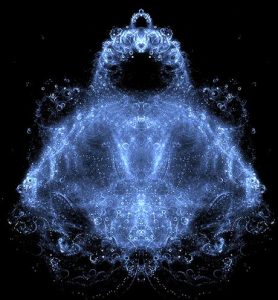 Osto, Douglas. Altered States: Buddhism and Psychedelic Spirituality in America. New York: Columbia University Press, 2016. ISNB 10: 0231177305 Hardcover, e-book. 328 pages.
Osto, Douglas. Altered States: Buddhism and Psychedelic Spirituality in America. New York: Columbia University Press, 2016. ISNB 10: 0231177305 Hardcover, e-book. 328 pages.
In recent years, the amount of published scholarly work on psychedelics, religion, and spirituality has grown enormously. Even so, many writers still feel it necessary to do a rhetorical dance around the taboos shaping the broader public’s association of psychedelics with 1960s counterculture and the law and order rhetoric that accompanied the War on Drugs. This is certainly the case for Douglas Osto’s Altered States: Buddhism and Psychedelic Spirituality.
He opens the book with disclaimer frequently made by people writing about drugs: he is not encouraging anyone to break the law but that he advocates the freedom of religious practice, a time-honored American value.[1] By the end of the book the statement seems hardly necessary, yet it remains interesting from a political-theological perspective, especially with respect to the close association between psychedelics, religion, and the state in the United States.
Osto’s book is timely. For the most part, psychedelics remain controlled substances in the U.S. Increasingly, what Art Kleps of the Original Kleptonian Neo-American Church called the “lesser sacrament,”[2] marijuana, has been deregulated for both medicinal and recreational use. While pot is culturally associated with “classic” psychedelics such as LSD and psilocybin mushrooms, it is altogether different in substance.
MDMA, another substance lumped in with the classics, is likely to follow the same deregulating trend as marijuana, especially with the efforts of the Multidisciplinary Association for Psychedelic Substances (MAPS) and their therapist training for MDMA treatment.[3] Similar work in the medical field has been done with LSD, Ayhuasca,[4] and psilocybin – perhaps most famously the work under R. R. Griffith and William A. Richards at Johns Hopkins University.
William A. Richards also published Sacred Knowledge” Psychedelics and Religious Experience this year. Reporting on his insights, Richards boldly claims, “In case you had any doubts, God (or whatever your favorite noun for ultimate reality may be) is.”[5] Osto, by contrast, is less overtly enthusiastic about the relationship between psychedelics and spirituality, although we come to find that he is an experienced psychonaut.[6]
I stress this because so much of the set and setting of his book is framed with respect to whether or not it is okay for Buddhists to use psychedelics to enhance their access to altered states of consciousness. While the discussion is framed within the context of American convert Buddhism, it also mirrors emerging questions about psychedelics at the national level.
Osto frames his book as a sociological study loosely mapped onto a trip across America to visit multiple Buddhist centers. In a methodological sense, it is not altogether different from religious studies ethnographies such as Robert Orsi’s Between Heaven and Earth: The Religious Worlds People Make and the People Who Study Them (Princeton University Press 2006) or Nancy Wadsworth’s study of American evangelicals, Ambivalent Miracles: Evangelicals and the Politics of Racial Healing (University of Virginia Press 2014).
Robert Orsi’s book is of note here because it represents a case where a well-respected academic who studies religion includes both his own faith-based perspective and even a chapter dedicated to studying a family member. Less overt than Orsi, Nancy Wadsworth lets her readers know her sexual orientation as a homosexual – a category that immediately puts her at political and theological odds with her research subjects – toward the end of her book. She is ethically transparent about her outsider status.
Similarly, T. M. Luhrmann’s When God Talks Back: Understanding the American Evangelical Relationship with God (Vintage 2012) foregrounds the theological dissonance between her views and those of her research subjects. Although Osto self-identifies as an “insider” in his book, he shares the same predicament as these other researchers methodologically: how much of the writer’s autobiography is ethically essential to the presentation of the research? This methodological decision carries important exigence for researchers interested in psychedelics.
Osto concerns himself with his readers’ assumptions about drugs and religion in opening his book the way he does. He then presents himself as “neutral” throughout the text, though a careful reader will detect in his interview questions to his subjects that he knows well what large doses of psychedelics are capable of doing to someone. Still, Osto pulls himself out of his main study, preferring to provide an autobiographical narrative as a postscript.
His rhetorical move comes at the cost of being up front concerning his experiential knowledge regarding psychedelics and Buddhist practice. This knowledge partly taints the “objectivity” of his research questions: “Are the practice of Buddhism by American converts and the spiritual use of psychedelics compatible?” and “If so, in what way?”[7]
As someone who studies the rhetorics around entheogens, I find Osto’s tactic more useful than disingenuous. He gives accounts of how surprisingly open people can be with researchers of psychedelics. I also find myself warning some of my students who are open about their use of psychedelics to be careful in publicly divulging such information in the current social atmosphere.
For example, while researching my first dissertation on psychedelic aesthetics and political theology at the University of Denver, I once taught a research-writing course dealing with themes of psychedelics and the afterlife. I remember opening my mailbox one day and receiving an official DU envelope addressed to me. Inside it was a small piece of aluminum foil with a spore print and an “anonymous” note saying, “I think this is still viable.”
I am pretty sure I know who sent it to me and how naïve they were about what a professional academic’s life is studying psychedelics, but I appreciated the sentiment nonetheless. With caution, Osto navigates the difficulty concerning personal experience and entheogens well. The application of his book in research is likely to make such issues more prevalent.
The bottom line is, as Osto makes clear, that both psychedelic enthusiasts and self-identifying Buddhists place a heavy emphasis on the notion of experience. Without appealing to one’s personal experience, whether as a Buddhist or as a psychonaut, one risks being less convincing. Osto confronts the issue of experience through the work of Wayne Proudfoot and Ann Taves.
Like Proudfoot, Taves suggests that rather than trying to defend a sui generis account of “religious experience,” scholars should employ an ascriptive model that is used to investigate how certain “things are deemed religious.” In this way, rather than attempting to isolate elements that make some experiences religious, scholars should investigate the reasons certain things, events, experiences etc. are deemed “religious” by individuals and communities.[8]
In writing this, Osto is confronting both the issue of his own experiences and the oft made claims among psychedelic enthusiasts that psychedelics offer some sort of “direct experience.” This move also allows him to take foundational writers concerning psychedelics such as Aldous Huxley and Timothy Leary at their own claims to spirituality without contending that their experiences are somehow less religiously authentic than the more “official” practices of more established religious traditions.
Osto structures his book with a brief introduction, a chapter delineating the history of psychedelics in the U.S. since the 1950s, and then another tracing the emergence of American Buddhisms during the same period. He follows these histories with detailed interviews of well-known Buddhist teachers in the U.S. and an electronic survey he did with Buddhist practitioners.
Osto qualifies some of the limitations of his research saying the interviews, “give no indication of how widespread the spiritual use of psychedelics might be within Buddhism. At best, they offer some anecdotal evidence concerning this heterodox and often outlawed practice among American convert Buddhists.”[9] By the end of the book the implication that these interviews speak to larger cultural conditions comes through loud and clear.
In addition to his own interviews, Osto bases a significant amount of his book on a special issue of Tricycle: The Buddhist Review (volume 66, no. 1, fall 1996) and the reprinting of some of that material in Allan Hunt Badiner and Alex Grey’s 2002 compilation of psychedelic Buddhist writings, Zig Zag Zen (Synergetic Press 2002 / 2015). After the history chapters, Osto gives two chapters accounting for pro and con arguments among American Buddhists for the relevance and usefulness of psychedelics for Buddhist practices, though the con chapter is the shortest in the book.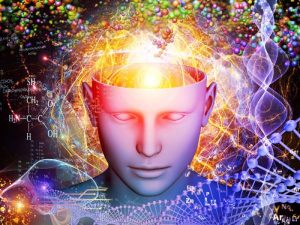
Based on his interviews, he importantly notes that a significant number of Baby Boomer convert Buddhists in the 1960s express that they moved away from or “graduated” from using psychedelics to more austere practices while others continued to use them quietly due to the War on Drugs. Their experiences were quite different than those coming to Buddhism in its American manifestation once it was well established at the end of the twentieth century.
The differing attitudes toward psychedelics thus generated differing attitudes toward them among American Buddhists. He does note that the younger generation appears to be more open to the use of psychedelics in practice than those who converted under the heyday of the War on Drugs.[10]
Refreshingly, Osto’s research gives some insight into gender and class privilege with respect to psychedelics – something that psychedelic enthusiasts constantly disregard, often in favor of perennialist or universalist accounts of psychedelic experiences. Osto shows that men are more likely to be vocal about their use and interest in psychedelics and that overall, white and middle-class individuals make up a significant amount of convert Bhuddists in the U.S.[11]
While Osto self-identifies as being a white and middle-class male, unfortunately in his own autobiographical reflections he does not speculate on the limitations of this perspective of on the sociological fact that white privilege allows for less scrutiny from law enforcement in the War on Drugs. The widespread concerns of the Black Lives Matter Movement, for example, and important books such as Michelle Alexander’s The New Jim Crow with respect to mass incarceration, both of which were at the center of public consciousness in the U.S. during the writing of this book are nowhere present in its content.
This is a general trend in literature putting a positive spin on psychedelics which promote the scientific potential for studying psychedelics and spirituality but neglect to acknowledge how the bulk of incarcerated people are people of color and thus have more to lose by experimenting with psychedelics and spirituality.
Perhaps this is an issue of scope; or perhaps it is part of the set and setting of a Grinnell graduate who had the privilege to travel to India after college and then attend Ivy League graduate school after having a mental breakdown, yet still manage to get “gifted and talented” Fullbrights and take part in the MDMA-infused “Harvard Agape.”
The “Harvard Agape” is in lineage with Walter Pahnke’s famous Marsh Chapel Good Friday experiments.[12] While Osto’s research commendably points to issues of gender, race and class, it is clearly a book produced by someone of privilege; and that opens up interesting questions related to both psychedelics and convert Buddhism in the U.S. Such questions relate to the limits of sociological studies in general and to what I will call a methodological liberalism.
Liberal subjectivity is already privileged subjectivity. Osto rhetorically falls back on his commitment to good old-fashioned American religious experimentation where the subject is a conscious seeker with agency and rights. Sociological studies like Osto’s often rely on methodological liberalism, whether they are of the “low-budget” ethnographic varieties I pointed to above or to the highly funded variety expressed in Nancy Tatom Ammerman’s Sacred Stories, Spiritual Tribes: Finding Religion in Everyday Life (Oxford University Press 2013). In both cases, methodological liberalism relies heavily on the idea that research subjects are “rational” subjects capable of authentically avowing their own positions.
While seemingly “giving voice” to such perspectives from a stance of the “disinterested” scholar, the scholar neglects the colonizing effects produced by his or her gaze. What is the true weight of the answers we give about ourselves at one instance or another, particularly when the information we are being asked to give potentially threatens us? Osto gives nod to these issues in his conclusion with a nods to Gananath Obeyesekere’s distinction between “I-thinking” and “It-thinking.”[13]
He also points to the Christopher Partridge, whose notion of “occulture” updates Colin Campbell’s famous sociological notion of the ‘cultic milieu.’ These concluding remarks combined with his interviews push the book beyond merely anecdotal evidence.[14]
I am well aware of the fact that Osto is doing the best he can given, and this is no attack on his very good book, but the book begs the question of the individual and to what extent his or her consciousness can be aligned with his or her political and epistemological agency. Methodological liberalism assumes the primacy of the conscious awareness of the subject.
What is a truly “Buddhist” perspective here? What are we truly aware of at any given moment? Must scholars accept the reduction of self to rational agent in order to produce acceptable scholarship? Does rejecting the primacy of such a rational agent itself reject liberalism? If so, what forces hold sovereignty over the “official” production of academic knowledge?
These are very important questions outside of the scope that Osto presents, I assume at least partially for the sake of packaging a “focused” account of his research. Contemplative readers have to be doubly aware of the market conditions that influence even academic publishers.
Another important issue related to the questions above it the concept of Buddhism itself in the U.S. cultural milieu. In terms of scholarship, Osto praises Donald Lopez’s Prisoners of Shangri-La: Tibetan Buddhism and the West and is well aware of Lopez’s critique that American Buddhism owes a significant debt to the set and setting of cultural Protestantism. I think such cultural factors cannot be ignored and would be useful place of inquiry for a future study.
For example, how do cultural assumptions about “drugs” influence their acceptability within given spiritual practices? Osto’s book lays the important groundwork for divergent practices within American convert Buddhism, no matter what the larger cultural attitudes are about psychedelics.
That said, certainly even a cursory glance at the theosophical undercurrent that produced Evans-Wendtz’s Tibetan Book of the Dead, the copy that Timothy Leary, Richard Alpert, and Ralph Metzner “translated” as The Psychedelic Experience[15] tells us that the very frame of the question with respect to psychedelics since the 1960s is tainted with western assumptions about what “the east” had to offer.
This cannot be passed over by merely dismantling the claims to “authentic religion” made by critics of major psychedelic figures from Huxley to Leary to the Mckennas to Winkelman and to MAPS. This is complex historical material that understandably had to be given limited space in Osto’s study, but it nevertheless remains important to a full account of psychedelics and Buddhism in the U.S.
Another limiting condition of methodological liberalism is the assumption that if one engages long enough with an “other” there will at some point be an “opening of self” allowing one access to the other’s perspective. This aspect is de-emphasized in Osto’s book because he self-identifies as an insider in the sense that he is a Buddhist practitioner who has used psychedelics in the past but who uses them infrequently in his current life.
Osto admits to the “constructed” nature of his book (and his postscript) with his intentional self-removal, an approval that I, as a reader, applaud. But, again, what forces govern the construction? What is the appropriate Buddhist response to those forces? In bringing these questions up, Osto’s book is important for a wider audience of religious studies scholars for questions about methodology.
Osto’s erudition within and without of Buddhism is pervasive throughout his book. He clearly knows traditional Buddhist canonical works but also notably cites the work of esoteric scholars like Partridge and Wouter J. Hanegraaff. In Hanegraaff’s “Entheogenic Esotericism,” he contends that
scholars will need to take account of the phenomenon of ‘entheogenic religion’ much more seriously than they have been doing so far. Whether we like it or not, we are dealing here with a vital and vibrant dimension of popular Western spirituality that has been with us for more than half a century now, and shows no signs of disappearing.[16]
Osto’s book, despite any criticism, performs this work. His attempt to take a neutral perspective appears to be in the service of taking ‘entheogenic religion’ seriously. This is, admittedly, difficult to do in a political climate in the United States where political rhetoric of protection against the social evils of drugs is manifested by a culture of a limited moral permissiveness and ongoing politics of respectability enforced by the middle class.
Living and teaching in New Zealand does not remove Osto from this problem. His avowal of commitment to “American” valuation of religious freedom puts him in line with scholars pushing for psychedelic deregulation. For example, J. Harold Ellens and Thomas B. Roberts open The Psychedelic Policy Quagmire with a chapter titled “You Have a Constitutional Right to Psychedelics.”
Ellens and Roberts frame their discussion in terms of a religious reformation similar to the Protestant Reformation.
In a very real sense, today’s Entheogenic Reformation extends the Protestant Reformation a giant step . . . In the latter Reformation, Protestants claimed they needed the Catholic Church less (or even not at all) because the Bible permitted them direct access to the word of God replacing a church that claimed to be the bridge to God. In today’s reformation, entheogenists claim that their sacraments give access to the experience of sacredness (sometimes interpreted as God) instead of the word of God in print.[17]
Where is the line between what Ellens and Roberts call an extension of the Protestant Reformation and what Osto calls American convert Buddhism, especially with respect to psychedelics in particular?
Psychedelic advocates constantly promote[18] the power of psychedelics to put us in touch with experiences so fundamentally human that they transcend nationality, race, class, ethnicity, gender, etc. – all of the things our liberal universities categorize as “Inclusive Excellence.”[19] This creates a discrepancy between rights-based, inclusive language, and psychedelic universalism. It is because of this discrepancy that I call attention to methodological liberalism.
Osto’s adherence to nationalist values and the claims of Buddhist converts highlight a tension between the oft espoused universal potential of psychedelics and their manifestations within certain groups. My sense is certainly not that Osto is making universalizing claims; he is trying to do the opposite by focusing on convert Buddhisms. But he still methodologically relies on identity constructions affirmed by rational subjects. What aspect of such constructions maintains consistency throughout the journey and return of a psychedelic experience?
Perhaps most compellingly, Osto relies on his interviews to address the recurring metaphor that psychedelics offer a “door opening” to deeper spiritual experiences. His entire study is useful for that alone. Whether it is the rhetoric of psychedelic “graduates” such as Joan Halifax or those who continue to use psychedelics in Buddhist practices, the metaphor of the opening door remains constant throughout descriptions of psychedelics.
Although Osto points to the fact that this may be simultaneously related to the cultural framing that theorists like Aldous Huxley have given to psychedelics via William Blake, Osto also suggests that the “door opening” metaphor may be more neurologically situated.[20] He lands in the safe claim that no matter the divergences within the American convert Buddhist communities, psychedelics bring up important debates and questions, and they are indicative of American idiosyncrasies in emergent Buddhist practices. Along with this, the persistence of psychedelics within American Buddhism seems to be here to stay.
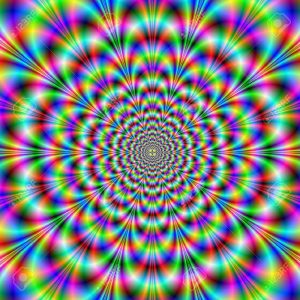 Osto’s book is exceptional in its ability to focus the conversation about entheogens within religious perspectives contrastive to the Protestant regime that culturally underwrites American religion, even if it does not make that connection explicit. Because of this, one ought not take the shortcomings I have presented here as limiting. This is enormously complex territory.
Osto’s book is exceptional in its ability to focus the conversation about entheogens within religious perspectives contrastive to the Protestant regime that culturally underwrites American religion, even if it does not make that connection explicit. Because of this, one ought not take the shortcomings I have presented here as limiting. This is enormously complex territory.
The book’s most important insight is the fact that, over and over again, psychedelic enthusiasts refer to initial use of psychedelics as “door-opening” – and from his account of a Buddhist perspective, whether or not one continues to use psychedelics or feels he or she has “graduated” from such experiences, the door-opening metaphor persists in individuals’ accounts of their experiences. The cultural set and setting may be more resilient throughout the psychedelic experience than universalists would like to suggest.
Osto’s work benefits from being read alongside the research of Nicolas Langlitz in Neuropsychedelia: The Revival of Hallucinogen Research since the Decade of the Brain. Langlitz’s study addresses some of the more salient issues with respect to bioethics and scientific test subjects. While he reveals that with respect to consciousness, animal testing simply cannot perform the way that human test subject research can, he also finds that even in the most “secular” and atheistic of laboratory settings, the question of psychedelics and spirituality constantly arises.[21]
Animals cannot report back on their consciousness experiences, but humans can. Osto points to the importance of experience but his limited space for cultural history lends no discussion of the importance of ethical research despite the fact that he knows the convoluted research history between psychedelics and dubious government programs like MK-ULTRA. Instead, he chooses a focused, sociological ethnography based on interview responses. There are limits to all our methods.
I believe that by pointing out the constructed narrative of the book in his postscript and qualifying the limits of his study, Osto understands this. He also points to more complex questions regarding the nature of subjectivity, experience, and scientific study.
Roger Green is a Lecturer in the English Department at Metropolitan State University of Denver. His work brings political theology into conversation with psychedelics and aesthetics. He is the author of “Aldous Huxley the Political Theologian” in Aldous Huxley Annual (vol. 14, 2014 / 2015), and “Force in Religious Thought: Carl Raschke and Victoria Kahn in Dialogue” in JCRT. His doctoral dissertation, Beware of Mad John (2013) explores connections between political theology and psychedelic literature. He is currently working on a second PhD in Religious Studies and Theology at University of Denver and Iliff School of Theology.
_________________________________________________
[1] Douglas Osto, Altered States: Buddhism and Psychedelic Spirituality in America, New York: Columbia University Press, 2016, xiii.
[2] Art Kleps, “Sixth-Century Political Economy,” Millbrook, okneoac.org, accessed July 3, 2016. http://okneoac.org/millbrook/ch33.
[3] “MDMA-Assisted Psychotherapy,” MAPS.org, accessed July 3, 2016. http://www.maps.org/research/mdma
[4] See Beatiz Caiuby Labate and Clancy Cavnar, The Therapeutic Use of Ayahuasca, Berlin: Springer-Verlag, 2014.
[5] William A. Richards. Sacred Knowledge: Psychedelics and Religious Experiences, New York: Columbia University Press, 2016, 211.
[6] Douglas Osto, Altered States: Buddhism and Psychedelic Spirituality in America, New York: Columbia University Press, 2016, 216.
[7] Ibid., 215.
[8] Ibid., 195.
[9] Ibid., 3.
[10] Ibid., 1.
[11] Ibid., 7.
[12] See “Postscript,” Ibid., 223-240.
[13] Ibid., 206.
[14] For a useful introduction to the issue see Christopher Partridge, “‘Occulture is Ordinary’ (Christopher Partridge, keynote, ContERN 2012), ” Youtube, November 5, 2013, accessed July 7, 2016, https://www.youtube.com/watch?v=15QfcIF01Y4.
[15] See Donald Lopez, Donald S., Jr. Prisoners of Shangri-La: Tibetan Buddhism and the West. Chicago: University of Chicago Press, 1998.
[16] Wouter J. Hanegraaff, “Entheogenic Esotericism,” Contemporary Esotericism, Ed. Egil Asprem and Kennet Granholm, London: Routledge, 2013.
[17] J. Harold Ellens and Thomas B. Roberts, The Psychedelic Policy Quagmire: Health, Law, Freedom, and Society, Santa Barabara: Praeger, 2015.
[18] See, for example, Neurons to Nirvana, directed by Oliver Hockenhull (2013; Mangusta Productions, 2013), Mp4.
[19] “Making Excellence Inclusive,” American Association of Colleges and Universities, https://www.aacu.org/making-excellence-inclusive
[20] Douglas Osto, Altered States: Buddhism and Psychedelic Spirituality in America, New York: Columbia University Press, 2016, 204.
[21] Nicolas Langlitz, Neuropsychedelia: The Revival of Hallucinogen Research since the Decade of the Brain, Berkeley, Berkeley University Press, 2013, 177.


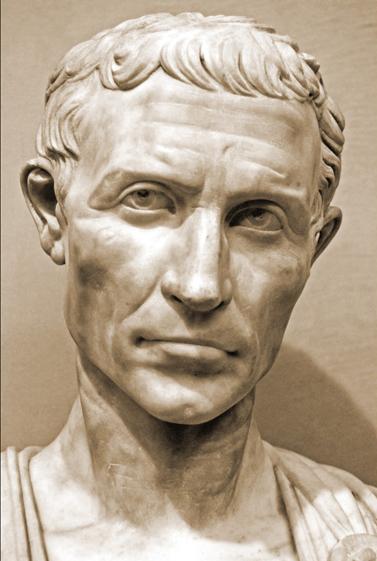

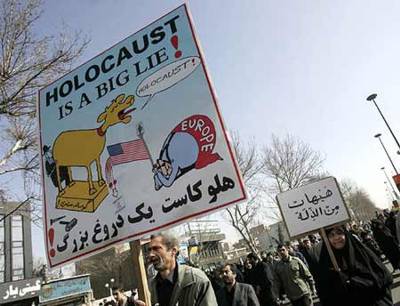
I thought overall this was a pretty good review. However, Green’s criticism that Osto didn’t refer to the “Black Lives Matter Movement”, or that “the bulk of incarcerated people are people of color and thus have more to lose by experimenting with psychedelics and spirituality” is not particularly fair, since Osto makes it clear right from his introduction that he is dealing with a demographic that is predominately white and upper-middle to upper class. He also makes it clear that he is a cultural “insider” to this demographic. It is true that he doesn’t discuss racial inequality, but that’s not the focus of the book. And Osto’s criticisms of the War on Drugs as a political stance would not just benefit white people, but also people of color. Moreover, this statement by Green is highly problematic:
“Perhaps this is an issue of scope; or perhaps it is part of the set and setting of a Grinnell graduate who had the privilege to travel to India after college and then attend Ivy League graduate school after having a mental breakdown, yet still manage to get “gifted and talented” Fullbrights and take part in the MDMA-infused “Harvard Agape.””
First, it is factually inaccurate. In his postscript, Osto’s autobiography describes how he received a Fulbright to Sri Lanka (not India), experimented with an extremely high dose of Ayurvedic medicine containing cannabis, which caused him to suffered a drug-induced psychosis, then went to Harvard Divinity School (once recovered), and there attended the Harvard Agape. Second, the reference here to Osto’s “set and setting” — rather than using these terms as they are generally applied to a particular context of a psychedelic experience — Green uses in an attempt to delegitimize Osto’s research based on his socio-economic status and mental health, which comes dangerously close to an ad hominem attack.